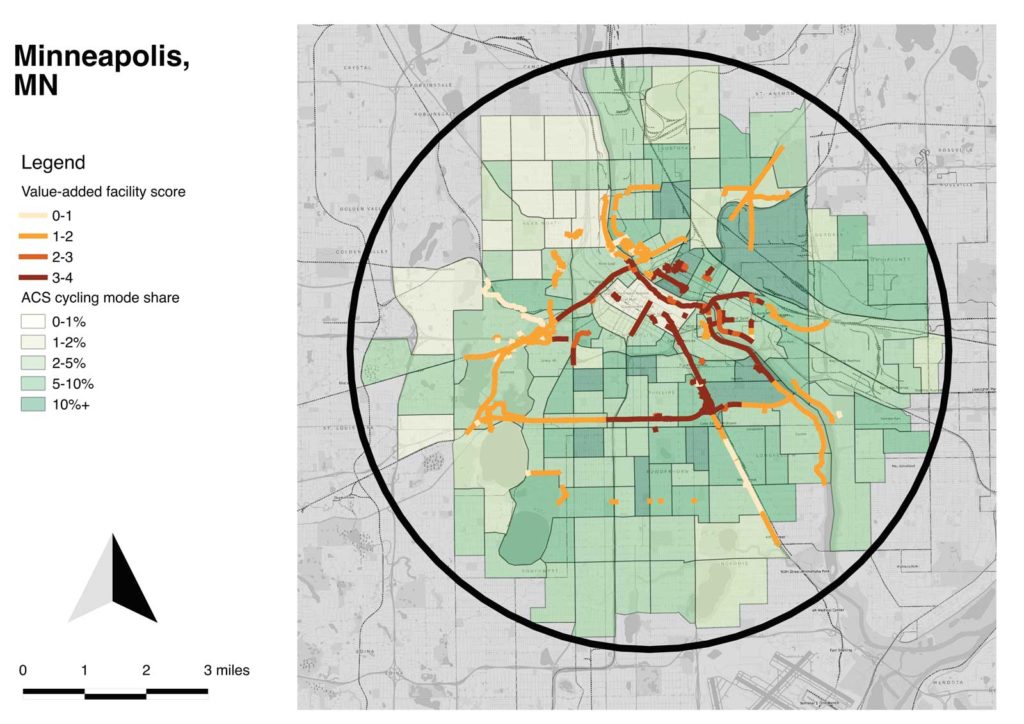I’ve been too busy with thesis work to post any updates here, but now it’s actually done! And I’ll have some time to start sharing bits of it.
The most common reaction I’ve gotten from bike-identified people I’ve shared the work with is, “that’s interesting, I haven’t thought about it that way before,” which I will accept as an indication that the project has been successful.
Here’s the summary, and a link to the full paper for people with a lot of time on their hands.
The invisible messenger bag: Cycling advocacy and identity politics in selected U.S. cities
Commute cycling increased by 50% nationally between 1990 and 2015, but the increase was not uniform across the U.S., with the highest and lowest cycling rates differing by a factor of 50. Much research has focused on the impacts of bicycle infrastructure, but infrastructure alone cannot fully, or even predominantly explain the differential.
In urban areas where cycling has substantially increased, powerful cycling advocacy groups have emerged, along with a stereotype of the urban cyclist as affluent, white, and male. Bicycle infrastructure has become a visible signifier of gentrification and displacement in urban areas, leading to conflict with disadvantaged populations. My initial interest in this project was to study the chicken-and-egg question: is gentrification caused by bicycle lanes, or are bicycle lanes a result of gentrification? I compare cities with similar demographics, but very different cycling rates, finding that bike facilities are more strongly associated with gentrification in the high-cycling cities, and that cycling advocates there encounter more conflict with disadvantaged populations.
Using Peggy McIntosh’s metaphor of coming to understand her own white privilege as an invisible knapsack she had been obliviously carrying, I study how privileged whites have adopted an oppressed identity as urban cyclists, and adopted the tactics of oppressed groups in advocating for their needs. They have achieved political successes partly because these advocates are privileged, and bicycle lanes have come to signify the structural advantages they enjoy.
Cities now compete for funding and “bicycle-friendly” status. The two primary comparative measurements of bicycle activity are linear facility miles, and city-wide commute mode share, measures with numerous flaws. By focusing on equal areas within each city, and developing metrics for facility usefulness, I develop a method for calculating a value-added facility score which can be comparable between cities.
Research on cycling infrastructure has an unfortunate tendency to neglect context. Every bicycle facility is installed in a spatial context; a context of indigenous conditions stemming from topography and from decisions made decades or centuries ago about the relationships between buildings and infrastructure. The development characteristics of the city’s waterfronts are particularly relevant for bicycle facilities.
Bicycle infrastructure projects also exist in a social context; a context which includes a history of racial segregation, urban renewal, and mass incarceration. Disadvantaged communities for generations have experienced city infrastructure projects dividing their neighborhoods; they are understandably skeptical of new projects intruding into their space. Cycling advocates must be sensitive to these dynamics when working on projects with disadvantaged populations, treating them as stakeholders to be engaged with, not obstacles to be overcome.
Full paper: The invisible messenger bag: Cycling advocacy and identity politics in selected U.S. cities


